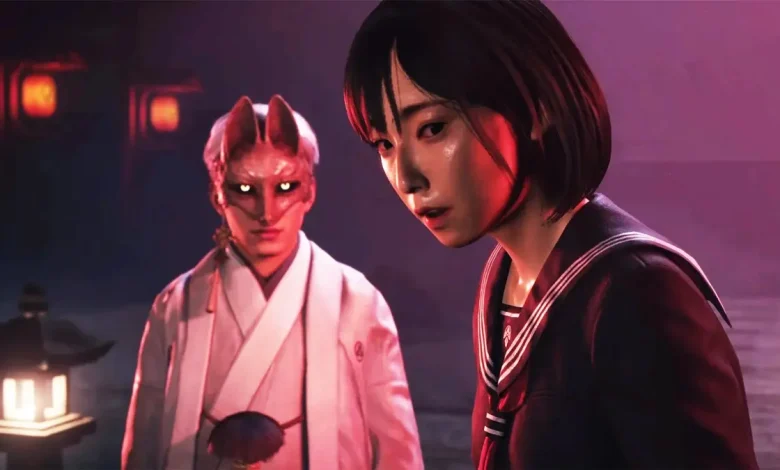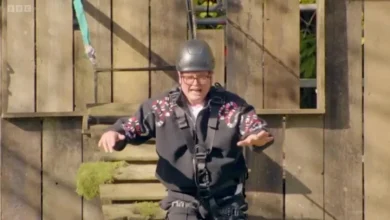Halloween gaming: An ode to Silent Hill’s unsung hero, creepy radio static

Silent Hill f’s radio static returns from the Silent Hill 2 remake, though it’s a tad underused this time around.
Silent Hill f casts aside series traditions by taking its nightmarish circumstances to a small Japanese town called Ebisugaoka, with a story set in the 1960s. Gone is the Midwestern American town-inspired setting fans of the franchise have grown used to, replaced by a period piece boasting creature designs and story elements extremely specific to the struggles of Silent Hill f’s protagonist, Hinako.
While this standalone spin-off attempts to break new ground in the franchise, it also finds clever ways to tie things back to the main video game franchise. Eager fans hopping into Silent Hill f right after Silent Hill 2 (2024) will notice many shared similarities, from creepy Mannequins to deadly crowbars.
What makes a welcome return here, however, is one of the series’ creepiest features: eerie radio static.
You’ve lost me. What’s all this radio static business about?
Hinako gets into spooky misadventures in misty Ebisugaoka.
In Silent Hill 2 (a game that we’ll be referencing a lot here, as it’s the mainline series’ most recent installment), protagonist James Sunderland picks up a radio that gives players a key in-game ability. Whenever enemies are lurking around James and hiding in the shadows, players will start to hear low static noises that grow louder the closer they get to an enemy encounter.
While this feature is intended to alert players of enemies in their vicinity, it does little to stave off the fear of encountering them. That’s because the static noises, while useful, don’t pinpoint the exact location of Silent Hill’s monsters. They only grow louder the closer James gets to danger, forcing players to constantly check corners and stay on alert, even in empty rooms seemingly devoid of threats.
These static noises are a clever way of instilling a sense of dread and suspense during light exploration sequences. Even while James is wandering around to gather bullets or puzzle clues, he is constantly reminded–courtesy of his radio–that there is no rest in Silent Hill.
Wait, there’s a radio in Silent Hill f?
The radio in Silent Hill f crackles when you get close to an enemy encounter, but only occasionally.
The radio is present in Silent Hill f, which is surprising considering that recent mainline installments, like Silent Hill 3 and Silent Hill 4, have toned down its usefulness in gameplay. That being said, the radio does sound quite different here; almost like a low, echoing series of rumbles and knocks. This might be partly due to the game’s setting; in the 1960s, radios had only just become portable, thanks to the invention of transistor radios in 1954. They weren’t quite everyday devices just yet. Radio static has to take a different, slightly more demonic-sounding form here.
Radios are present in Hinako’s hometown, but given its relative separation from the bigger cities of Japan and rural nature, it only makes sense that Hinako might have a harder time getting her hands on a radio than James did in Silent Hill. We don’t get a big scene where Hinako picks up a radio, as a result. We just hear disembodied static during intense in-game sequences, or when Hinako happens to be nearby an actual radio.
Radios are also a little less prominent in Silent Hill f because of its linearly-told storyline. While the game offers plenty of avenues in exploration and resource-gathering, Hinako rarely ends up exploring big spaces and buildings outside of the main story. Instead, she pokes around streets, narrow alleys, and classrooms to find some optional goodies. Parts of Ebisugaoka are entirely closed off to the player during the story, leaving them only a handful of paths to explore.
In Silent Hill 2, the radio static was much more prominent during gameplay.
This is in contrast with Silent Hill 2, where James could explore much larger spaces freely and of his own accord, though he would typically end up expending more resources than he’d gain in doing so. The game had plenty of crevices in which to tuck hidden Mannequins and Creepers, which led to the constant and predictable rise in static emitting from James’ radio.
Because there are fewer enemy encounters found off the beaten path in Silent Hill f, the radio static is much less useful in actual gameplay, only alerting Hinako to nearby radios for lore drops or collectibles. Perhaps even if it had functioned the same as in previous Silent Hill games, it would be so absent outside of main story scenarios that players might not have noticed anyway. When you’re walking down a seemingly empty street in Ebisugaoka and suddenly hear the radio quietly crackle to life, however, you still can’t help but feel that Hinako isn’t safe.
Dread begins to build. Your eyes drift to Hinako’s health bar and sanity meter. Suddenly, the path ahead doesn’t seem quite as enticing. Are you really prepared for what lies ahead?
Silent Hill f’s reimagining of core Silent Hill features
Hinako has a rough journey ahead of her.
Silent Hill f may be a standalone spin-off, but it does feel like a direct sequel in all the same ways Resident Evil 7: Biohazard did. New creature designs, a different time period, and a new combat system help to freshen up the series and revitalise it for a new generation of players: those who might have opted out of last year’s Silent Hill 2 remake, in favour of something totally new.
Despite these changes, the bones of a mainline Silent Hill installment are still present in this game. Mannequins appear with different designs and an entirely different context within the story, but they’re the same enemies players have fought time upon time again. Silent Hill 2’s Lying Figure is ostensibly the same entity as the Vomiting Monster in Silent Hill f, which also dispenses harmful liquids at the player from a distance.
The crackling radio static is just one element of the original games that Silent Hill f retains and reimagines, and it is better for it. Although we don’t hear the radio go off too often in this game, it does send the same shiver up our spines when navigating the misty roads of Ebisugaoka. However, we do wish it had retained its original purpose in this game. Without the radio crackle, a jumpscare is just a jumpscare. With it, however, Silent Hill f forewarns the player ahead of time of the ill fate awaiting them–and the player walks right into a trap of their own volition.
That’s what horror games are all about, after all.





